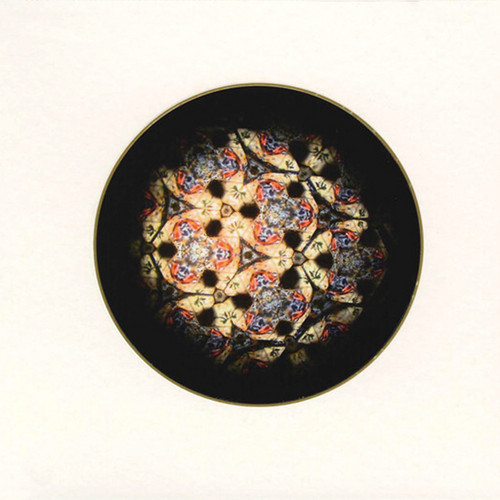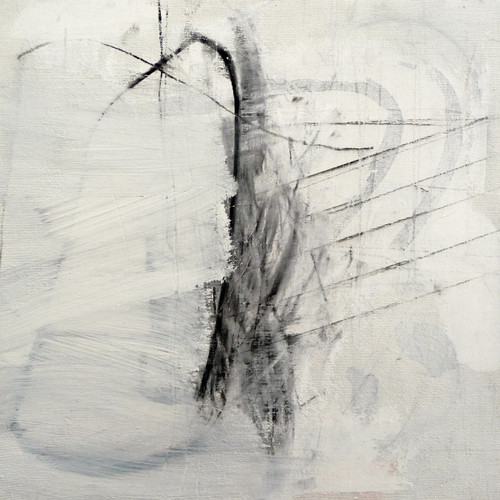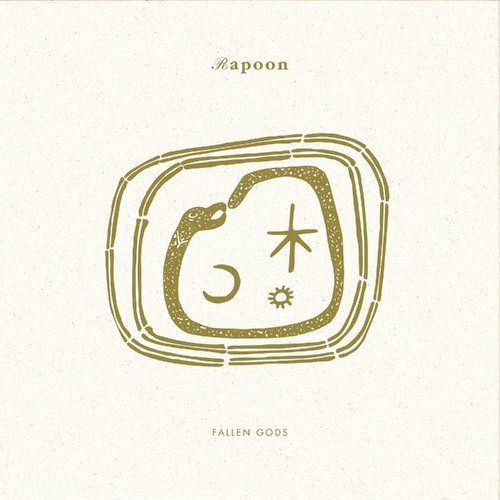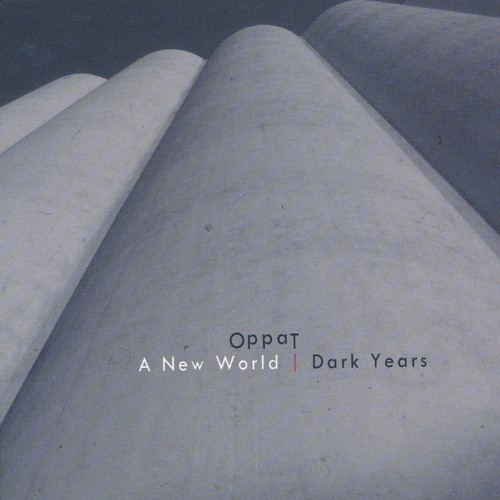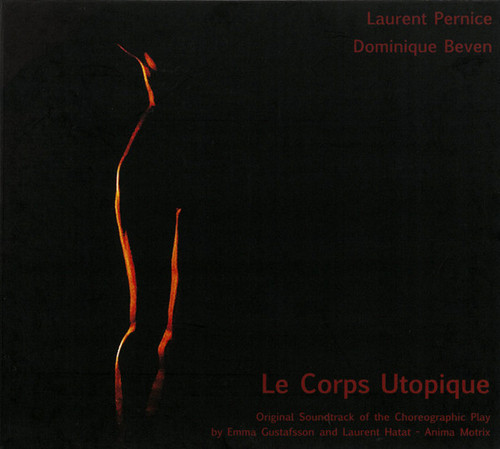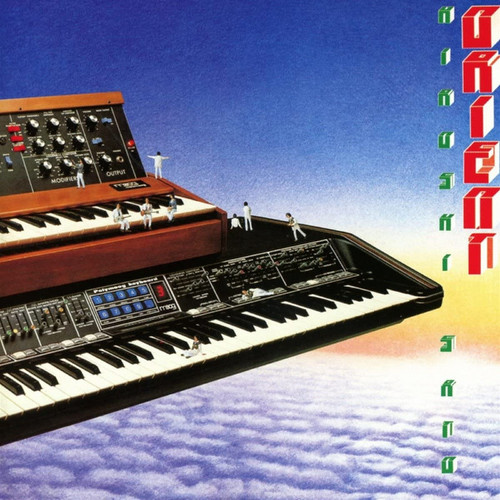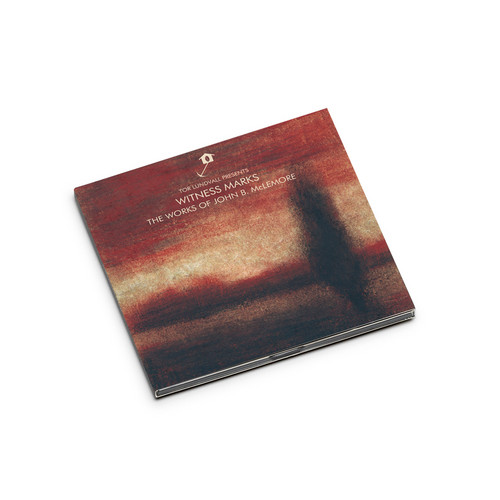Vagrancies
Austin's Andrew Anderson has released a number of solo cassettes (as well as an album with Thor Harris - see their duo, THAA's excellent 2020 album, Against Permanence). Vagrancies, Anderson's debut for Elevator Bath, however, is arguably his most ambitious and accomplished work to date. Each of Anderson's primary concerns is represented fully in this new collection. Mangled tapes, unidentifiable instruments, electronic wizardry, and wide-ranging found sounds / field recordings join forces here …
Ftarri Fukubukuro 2018
Fukubukuro are special surprise gift bags sold at stores in Japan at the New Year. This fukubukuro CD is being released by the CD shop/label Ftarri to celebrate its fresh start for 2018. Each of the 5 tracks is a solo piece by a different musician. Shuta Hiraki is an electronics musician who creates mainly drone music. He released the CD Unicursal on Kyou Records in 2017. Radio ensembles Aiida, a solo project by A. Mizuki, presents unique performances using shortwave radios as "instruments." Her…
Allure
2007 release ** "This EP is the 3rd in a series of 3 EPs in the series "Neither Speak nor Remain Silent" by Fovea Hex, who by this time was all centered around the artist Clodaugh Simonds, who was the lead singer for a progressive folk band in the 70s called "Mellow Candle". They only released one album in the 70s, and then another one in the 90s. They were obviously not a very well known band, and I can't speak of their music since I haven't heard it. The reason why this was brought to my atten…
InTolerance
«Tolerance can be used to describe how things fit together. Another term is allowance. Situations do not always run smoothly alongside others. People are not always able to accept new situations presented to them. With this work, I have stated “Many borders crossed, communities welcomed by, moments shared, ideas exchanged. Everyone on the planet should have this basic human right.” I truly believe this and have grown in every way through my own experiences, here combined in a way to reflect both…
Music For Abandoned Cold War Places
*Limited edition of 200 copies.* Since the 1978 Brian Eno album Music For Airports, subsequent attempts to produce music to create sonorous ambient textures and/or to describe environments through sound have been numerous. With this present compilation, curated by Raffaele Pezzella (Sonologyst), ZeroK (in collaboration with, Gavin Morrow , Joel Gilardini, Esa J. Ruoho, Heikki Lindgren, Andrés Faliu, Dani Kloob, Adriano Ragni, Matteo Scaioli, Evgeny Pustota, Valter Abreu, Jarko M. Hedenius, Janne…
Heart Of A Wolf (2CD)
** 2022 stock ** Limited edition of 423 copies. Released in six-panel Digipak with additional insert card. This is the second collaborative album by the industrial legend the Polish duo from Torun, and is a sonic postcard from their 2011 tour in May 2011 and is composed of two, supposedly without overdub, livesets: „Live in Torun” is the first set, a long track, and is focused on the resonance of the cymabals and gong notoriously used by the players in the first part of the gig while the develop…
Cloud Holding
Cloud Holding is NYC-based Bryce Hackford’s fifth full-length work, and his first with Futura Resistenza. Seven figures emerge out of recorded improvisations with a group of musicians: Ka Baird, Shelley Burgon, Alice Cohen, Michael Hurder, Dominika Mazurová, Camilla Padgitt-Coles. The instrumental utterances (including the original instrument—the voice) of these varied talents are gently treated and coaxed by the composer, nudged into little sculptures of sound which express an always drifting …
Night Time Transmissions
'Bergur’s first solo album. Composed, developed, and recorded between the winter of 2019 and the winter of 2020; between Lithuania, Iceland, The Netherlands; in the field and in the studio; with the help of friends. For instance, with the Singing Club of Rotterdam — of which Bergur is one of the co-founders, members, and organizers — which runs as a bi- monthly-meeting, informal-group-of-people interested in the potentialities of voice and choral sound. The Singing Club appear in Night Time Tran…
C’est Disco
** 2022 limited reissue ** C'est disco is the first studio album by the Italian band Rats. It was released in 1981 by Italian Records and is a record strongly inspired by the wave and dark scene of that period. In 2014 the record was reissued in a vinyl version with the addition of a bonus CD featuring the complete album plus the song Tattoo, initially discarded from the album's tracklist and included in a compilation. The band's line-up featured vocalist Claudia Lloyd on vocals, and on guitar t…
Fallen Gods (2LP)
*Small repressing of 200 copies on white cover out now!!* Fallen Gods is the third studio album by Rapoon aka Robin Storey, formerly of :zoviet*france:. Originally released in 1994, ‘Fallen Gods’ emerged amid a prolific early period for the Rapoon project, following in the wake of debut album ‘Dream Circle’ – originally released in 1992 – and second outing ‘Raising Earthly Spirits’, released a year later. Building on the haunting industrial ethers of ‘Dream Circle’ and the esoteric, rhythmic dro…
A New World / Dark Years
A New World and Dark Years are two different projects by OppaT alias Luciano Margorani (guitarist of LA1919, Beauty is in the Distance, Fracture and Artchipel Orchestra). This is the second opus of OppaT on ADN label.
A New World is a conceptual project that tries to explore all the lacks of our agonizing world. This is done through a series of titles remembering all what our society didn't develop with intensity through the years and centuries. Equity, Tolerance, Truth, Solidarity, Justice, Hop…
Le Corps Utopique
These are truly original pieces, very personal, closer to contemporary and improvised music than to ethnic music.The recordings began in autumn 2019 in Laurent Pernice's studio. Dominique Beven improvised a series of tunes, under the direction of the composer, during three different sessions distributed over time. The sound recordings were then re-arranged, mixed and electronically manipulated by Laurent Pernice to produce the final pieces to be submitted to Anima Motrix Company. The album " L…
Breakin' Is A Memory
Tony Rolando's debut "Breakin' Is A Memory" could be your soundtrack. This worldbuilding album of electronic music leaves room for the listener to make big personal connections through subtly complex music resembling a sonic mobile which, as it spins, reveals new forms and colors......
Tokyo Glow
Following the recent success of the 'Tokyo Dreaming', Wewantsounds comes with another compelling set, this time compiled by City Pop expert DJ Notoya who has dug the rich Nippon Columbia catalogue to bring a breezy selection of funky gems by Hiroshi Sato, Hitomi "Penny" Tohyama, Midori Hara, many of which making their vinyl debut outside of Japan. The 2-LP gatefold album has been designed by Optigram and is annotated by DJ Notoya with Nick Luscombe. The audio has been newly remastered in Tokyo b…
Orient
*2022 stock* Hiroshi Sato's ultra rare synth masterpiece, originally released in 1979 on Kitty Records in Japan only. Digitally remastered from the original tapes, Orient features the cream of Japanese musicians including Shigeru Suzuki on guitar, Haruomi Hosono on bass, Pecker on Percussion and Sato himself on keyboards and synthesizers. This highly sought-after album on the Balearic scene, changing hands for high prices, is a superb breezy mix of Japanese synth-pop and exotica with subtle touc…
Witness Marks - The Works Of John B. McLemore
New York painter and musician Tor Lundvall initially envisioned his 14th album, Beautiful Illusions, as an entirely instrumental affair, “inspired by memories of sitting in a church or cathedral watching the shifting sunlight through stained glass.” Although he ultimately chose to wreath the majority of the tracks with hushed, poetic vocals, his original muse still resonates. These are certainly songs of shadowplay and vaulted skies, the quiet grandeur of dusk deepening on the horizon. Lundvall …
Quatre Saisons
The general idea of this piece was to imagine a fresco comparable to a Lied, where the soloist's voice is accompanied by electronic sounds combined with concrete and instrumental sounds processed on a computer — sounds from nature and transformed orchestral sounds. Only German corresponded to the conditions I had set for myself — expressionism, distance from the text (which does not really need to be understood), musical language.Goethe's “Four Seasons” was written in the fall of 1797, after the…
Room Sound
New Noveta, the performance art group led by Keira Fox and Ellen Freed, has been described as ‘nothing if not new’ by Artsy and purveyors of ‘catastrophic distress’ by Mousse. Theirs is a project utilising all sensory, elaborately choreographed and costumed fourth-wall breaking performance art and sound, conveying contemporary hysteria: ‘intent on reproaching attitudes that otherwise pathologize ‘difference as illness’.’ (Frieze)This release documents the group’s five years of artistic collabora…
Colónia / Vai e vem
*100 copies limited edition* "Colónia" was commissioned for Walk&Talk Festival de Artes "9.5" edition in 2020."Vai e vem" is a composition that was part of the public installation of the same name by TM created for Walk&Talk Festival de Artes 10 edition in 2021.
"Colónia" composed and performed by Tropa Macaca Recorded by and mixed with Leonardo Bindilatti Mastering by Tó Pinheiro da Silva.
"Vai e vem" composed and performed by Tropa Macaca Recorded by and mixed with Noah Lennox Mastering by Ruy…
Guest Room
Francesco Serra (born 1980) is an Italian guitarist from Cagliari who lives and works in Bologna. His music research focuses on performance practices aimed at expanding the timbre qualities of the electric guitar, emphasising the evocative potential of sound and exploring possible contaminations among sound, space and image. He started recording solo under the name Trees of Mint in 2008, progressively deconstructing, in the span of three albums, his initial approach to song structure through sou…


